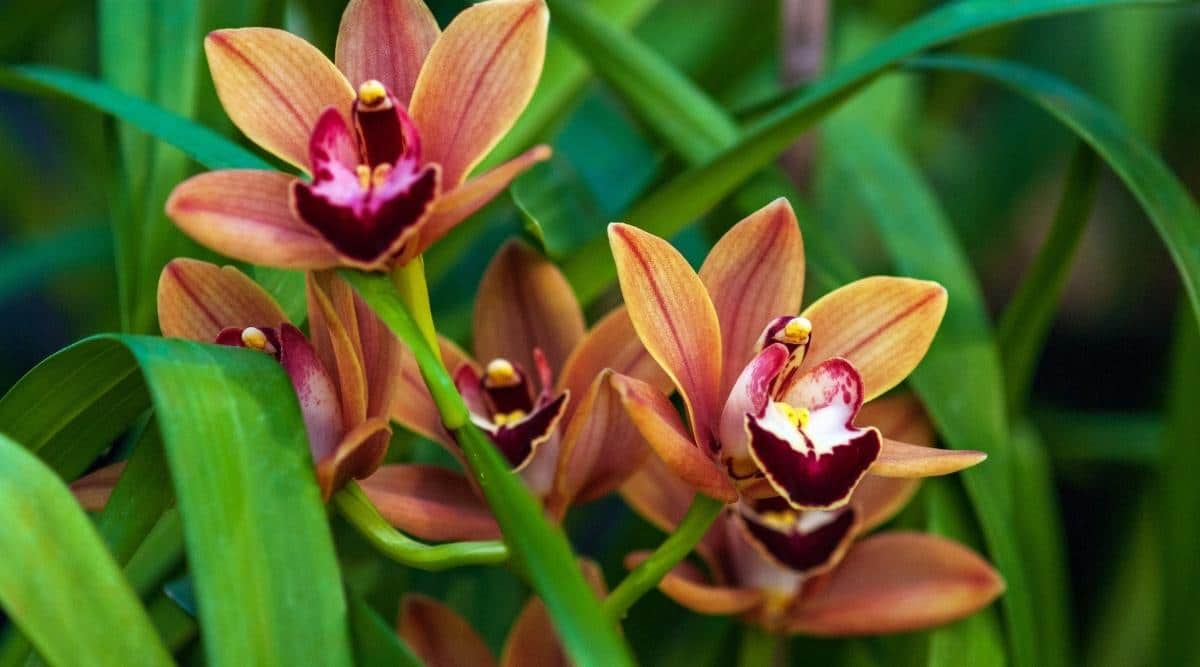
Welcome to the captivating world of orchid cultivation! Orchids have been mesmerizing gardeners and enthusiasts for centuries with their stunning beauty and diversity. Whether you are an experienced gardener or a novice plant lover, delving into the art of growing orchids can be a truly rewarding experience.
In this article, we will uncover 19 astonishing facts about orchid cultivation that will leave you in awe of these magnificent plants. From their fascinating adaptations to their intricate care requirements, there is so much to discover about these delicate yet resilient flowers.
So, get ready to uncover the secrets behind successful orchid cultivation and be prepared to be amazed by the wonders of the orchid world!
Key Takeaways:
- Orchids are fascinating plants with diverse colors, scents, and habitats. They require patience and attention to detail for successful cultivation, making them a unique and rewarding hobby for enthusiasts.
- Orchids have a rich history, from ancient civilizations to modern-day popularity as gifts and decorations. They inspire art, culture, and conservation efforts, showcasing their enduring beauty and significance in the world.
The Orchid family is one of the largest plant families on Earth.
With over 28,000 different species, Orchidaceae is one of the most diverse and widespread plant families, spanning across all continents except Antarctica.
Orchids have been cultivated for thousands of years.
Since ancient times, orchids have fascinated humans with their exquisite beauty and fragrance. They were highly valued in civilizations like the ancient Greeks and Chinese.
There are many different types of orchids.
Orchids come in a wide variety of shapes, sizes, and colors. Some popular types include Phalaenopsis, Cattleya, Dendrobium, and Vanda.
Orchids can be found in diverse habitats.
Orchids have adapted to various environments such as rainforests, deserts, mountains, and even coastal regions. This adaptability contributes to their wide distribution.
Orchid flowers can last for several weeks.
Unlike many other flowers, orchid blooms have an impressive longevity, with some varieties maintaining their vibrant colors for up to six weeks.
Some orchids have captivating scents.
While not all orchids have a fragrance, some species emit delightful scents, ranging from fruity to spicy or even resembling the fragrance of vanilla.
Orchids rely on pollinators for reproduction.
Bees, butterflies, moths, and hummingbirds are among the pollinators that play a crucial role in the reproduction of orchids by transferring pollen from one flower to another.
Orchids have intricate and unique flower structures.
Orchid flowers exhibit fascinating characteristics, such as bilateral symmetry, complex petal formations, and specialized reproductive parts known as the column and the lip.
Some orchids have evolved to mimic other species.
Known as orchid mimicry, certain orchids have evolved to resemble insects, allowing them to attract specific pollinators or avoid being consumed by them.
Orchid seeds are tiny and have no energy reserves.
Orchid seeds are incredibly small, resembling fine dust particles. They lack endosperm, which provides nutrients for seed germination, making orchid germination a complex process.
Orchids can be found in nearly every color imaginable.
From vibrant shades of purple, pink, and yellow to delicate hues of white, green, and blue, orchids present an extensive color palette to captivate enthusiasts and collectors.
Orchids have been used in traditional medicine.
In various cultures around the world, orchids have been used for their medicinal properties, with applications ranging from treating coughs and digestive ailments to aphrodisiac qualities.
Some orchids are endangered species.
Due to habitat destruction and illegal trade, certain orchids have become endangered or threatened. Conservation efforts are crucial for ensuring their survival.
Orchids can be grown indoors or outdoors.
With the right care, many orchid varieties can thrive both indoors as houseplants or in outdoor gardens, depending on their specific environmental requirements.
Orchid cultivation requires patience and attention to detail.
Successfully growing orchids requires understanding their specific needs, including light, humidity, temperature, watering, and fertilization, which can vary depending on the species.
Propagating orchids can be done through various methods.
Orchids can be propagated through techniques like division, backbulb propagation, keiki propagation, or by using specialized tissue culture methods to create clones.
Orchids have become popular gifts and decorations.
With their stunning beauty and symbolic meanings of love, luxury, and refinement, orchids have become a popular choice for special occasions, home decor, and floral arrangements.
Orchid enthusiasts often participate in shows and competitions.
Dedicated orchid lovers enjoy showcasing their cultivated plants at orchid shows and participating in competitions to celebrate their achievements and display their unique specimens.
Orchids have inspired art, literature, and culture.
Throughout history, orchids have served as a muse for artists, writers, and poets, symbolizing beauty, elegance, and delicate grace in various forms of artistic expression.
Conclusion
Orchid cultivation is a fascinating and rewarding hobby that allows you to immerse yourself in the beauty of these exquisite flowers. From the diverse range of species and hybrids to the various care requirements, there are always new things to discover about orchids. By understanding the unique characteristics of different orchid types and providing them with the necessary care, you can enjoy their stunning blooms year-round.
Whether you are a seasoned orchid enthusiast or a beginner looking to embark on this journey, these nineteen astonishing facts about orchid cultivation provide valuable insights into the world of orchids. From their incredible adaptability to their intricate pollination methods, orchids are truly a marvel of nature.
So, why not explore the enchanting world of orchids and start cultivating your collection today?
FAQs
1. Are orchids difficult to grow?
While different orchid species have varying care requirements, with the right knowledge and attention to their specific needs, orchids can be successfully grown by enthusiasts of all levels.
2. How often should I water my orchids?
Watering needs vary depending on the orchid species, potting medium, and environmental conditions. Generally, it’s best to water orchids when the top inch of the potting mix feels dry.
3. Do orchids need a lot of sunlight?
While orchids do need light to grow, they should be protected from direct sunlight, as it can cause leaf burn. Providing them with bright, indirect light is usually sufficient.
4. How long do orchids bloom for?
The duration of orchid blooms varies depending on the species and environmental conditions. Some orchids can bloom for a few weeks, while others may have blooms that last for several months.
5. Can orchids be grown indoors?
Yes, orchids can be grown indoors as long as they receive proper light and temperature conditions. Some orchids, such as Phalaenopsis, are particularly well-suited for indoor cultivation.
Orchid cultivation is a fascinating world filled with stunning beauty and endless variety. From the thousands of species to their unique care requirements, these exquisite flowers have captivated humans for centuries. Whether you're a seasoned orchid enthusiast or just starting your journey, understanding the astonishing facts about orchid cultivation can help you appreciate and nurture these incredible plants even more. So, why not explore the extraordinary world of Dendrobium orchids and discover the secrets behind their breathtaking allure?
Was this page helpful?
Our commitment to delivering trustworthy and engaging content is at the heart of what we do. Each fact on our site is contributed by real users like you, bringing a wealth of diverse insights and information. To ensure the highest standards of accuracy and reliability, our dedicated editors meticulously review each submission. This process guarantees that the facts we share are not only fascinating but also credible. Trust in our commitment to quality and authenticity as you explore and learn with us.


